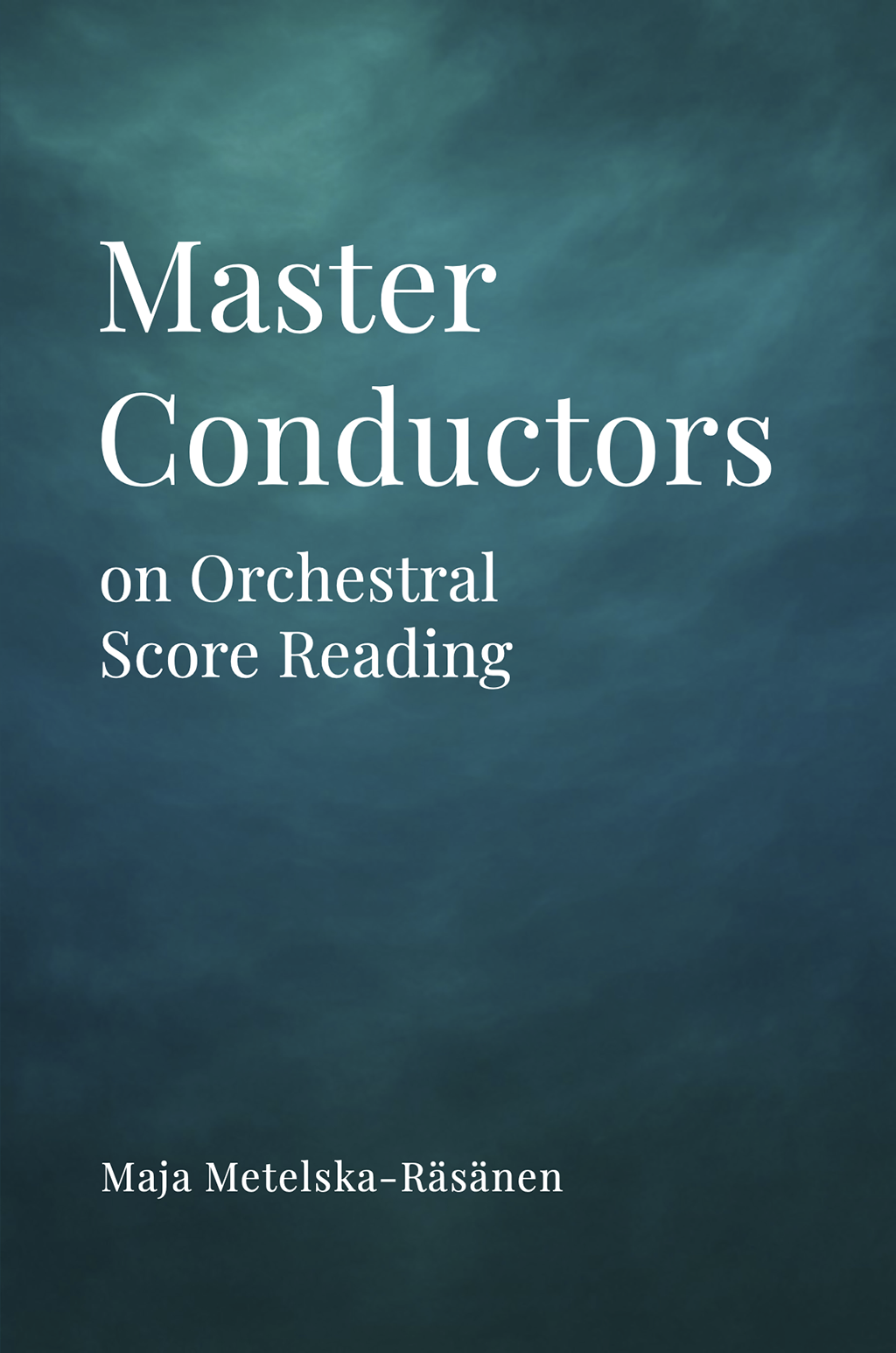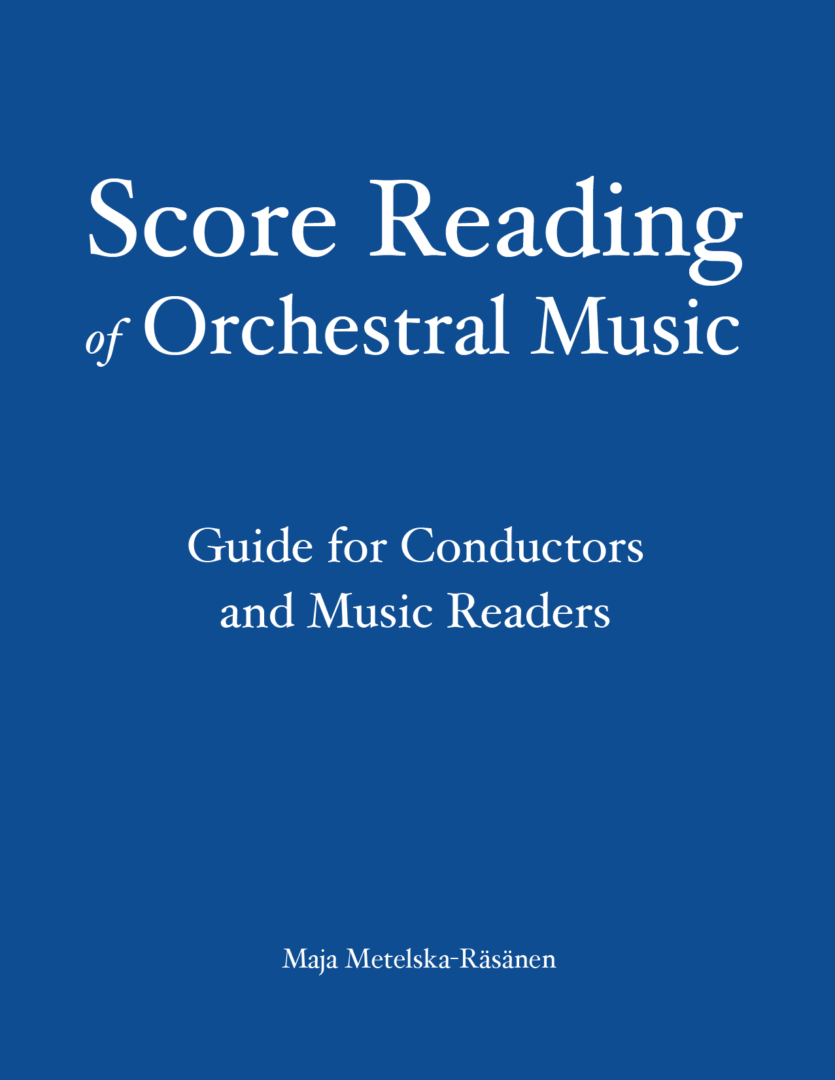Maja Metelska-Räsänen
Master Conductors on Orchestral Score Reading
What does it truly mean to read an orchestral score, and how can it be done? This book offers an in-depth exploration of orchestral score reading, presenting approaches employed by both historical and contemporary professional conductors from around the world. Read more…
Available in both paperback and hardcover formats from Lulu and also directly from the publisher using the button below.
Maja Metelska-Räsänen
Score Reading of Orchestral Music
Guide for Conductors and Music Readers
A comprehensive guide to score reading of orchestral music for conductors and all musicians, music readers and students. It presents methods on synthesising a score, creating a sounding image of the score in the mind, reading in clefs, decoding single and multiple transpositions, making piano reductions. Each of the topics is complemented with a wide range of practice examples from 18th – 20th century orchestral repertoire. Read more…
Maja Metelska-Räsänen
Maja Metelska-Räsänen, D.Mus.A., is a conductor with extensive experience in teaching score reading to conducting students. A graduate of both the Sibelius Academy and the Chopin University of Music, she has conducted professional orchestras around the world. Passionate about score reading, she is fascinated by its multifaceted nature and its fundamental role in the conductor’s art.


